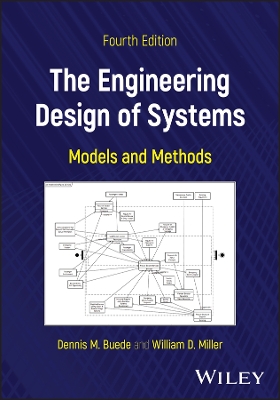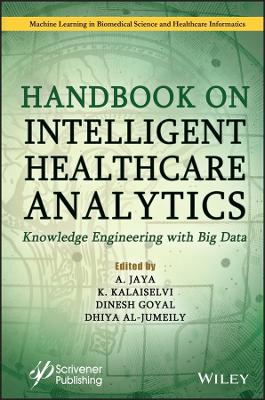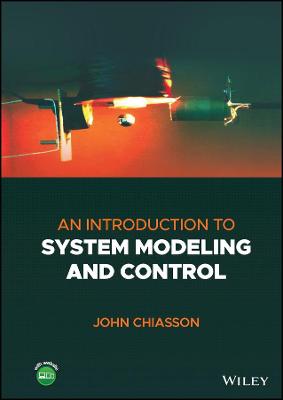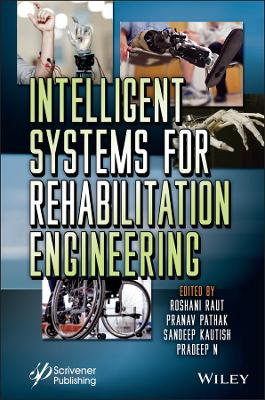Photovoltaic (PV) System Delivery as Reliable Energy Infrastructure
 -10%
portes grátis
-10%
portes grátis
Photovoltaic (PV) System Delivery as Reliable Energy Infrastructure
Balfour, John R.; Morris, Russell W.
John Wiley & Sons Inc
05/2024
576
Dura
Inglês
9781119571193
Pré-lançamento - envio 15 a 20 dias após a sua edição
Acknowledgments xxi
Abbreviations xxiii
1 Assessing PV Industry Challenges 1
1.1 Introduction 1
1.2 Terminology 2
1.3 Preventive Analytic Maintenance 3
1.4 Current State of the Industry 5
1.5 Defining Failure and Success 6
1.6 Application of PAM 17
1.7 Cost Control Considerations 18
1.8 Project Versus System Delivery Process 21
1.9 PAM Concept 24
1.10 Challenges Today with the Bidding Process 25
Bibliography 35
Notes 36
2 PV System Delivery Process 39
2.1 Introduction 39
2.2 PAM PV System Delivery Process 42
2.3 PV Plant Commissioning 64
2.4 Universal Real-Time Data (URTD) and Data Sharing 71
2.5 PV Plant Lifecycle 76
2.6 Standard Test Conditions 77
2.7 Capacity and Capability 78
2.8 Addressing the Gaps 82
2.9 Masking and Its Impact 85
2.10 System Design Assumptions Drive Plant Fiscal Performance 87
2.11 Conclusion 89
Bibliography 90
Notes 90
3 Current PV Component Technologies 93
Key Chapter Points 93
Key Impacts 93
3.1 Component Selection 93
3.2 Present State of Technology 97
3.3 Manufacturing Risk 100
3.4 Primary Technologies Discussion 121
3.5 Inverters 134
3.6 Equipment Removal, Disposal, and Recycling 142
Bibliography 147
Notes 147
4 SE/Repowering TM Planning Process 149
Key Chapter Points 149
Key Chapter Impacts 149
4.1 Introduction 149
4.2 What Is the SE/Repowering TM Process? 152
4.3 There Is a Continuous and Contentious Complaint about Lifecycle Performance 156
4.4 Cannibalization 162
4.5 Impacts of SE/Repowering TM 163
4.6 Types of SE/Repowering TM 166
4.7 Preemptive Analytical Maintenance SE/Repowering TM System Planning 175
4.8 RAMS for SE/Repowering TM 176
4.9 SE/Repowering TM Considerations 184
4.10 Technology Fatigue 196
4.11 Data Collection 197
Bibliography 202
Notes 202
5 System Engineering 205
5.1 Introduction 205
5.2 Why Systems Engineering 206
5.3 SE Process 210
5.4 Project Phases Overview 218
5.5 Systems Engineering Tools 220
5.6 System Versus Project Delivery Method 227
5.7 Conclusion 264
Bibliography 265
Notes 267
6 Reliability 271
6.1 Introduction 271
6.2 Why Reliability 272
6.3 Success/Failure 274
6.4 Overview 280
6.5 Reliability 282
6.6 Stakeholder Needs 284
6.7 Reliability Predictions, Analysis, and Assessments 287
6.8 Reliability Program Plan 293
6.9 Reliability Mathematics 295
6.10 Reliability Block Diagrams (RBD) 307
6.11 Fault Trees 311
6.12 Failure Modes and Effects Analysis (FMEA) 311
6.13 Failure Reporting and Corrective System (FRACAS) and the PV SCADA 324
6.14 Root Cause Analysis 325
6.15 Data Analysis 326
6.16 Reliability Predictions 334
6.17 Derating 337
6.18 Reliability Testing 338
6.19 Summary 341
Bibliography 342
Notes 345
7 Maintainability 347
7.1 Introduction 347
7.2 Responsibility for Maintainability 350
7.3 Types of Maintenance 350
7.4 Maintenance Cost 355
7.4.1 Run to Failure 356
7.5 Typical Maintenance Flow 357
7.6 Additional Maintenance Metrics 364
7.7 Available Maintenance Time 364
7.8 Maintenance-Driven Availability 365
7.9 Preventive Maintenance (PM) 371
7.10 Customer-Generated Maintenance 371
7.11 Energy Storage 373
7.12 Spares 374
7.13 Testability 379
7.14 Maintenance and Testability Specifications 384
7.15 Conclusion 386
Bibliography 386
Notes 387
8 Availability 389
8.1 Introduction 389
8.2 Why Measure Component Availability 391
8.3 Information Categories for Plant Availability (Unavailability) 395
8.4 Types of Availability 395
8.5 Confusion With Availability Metrics 403
8.6 Grid Availability 404
8.7 Specifications 404
8.8 Conclusion 406
Bibliography 406
Notes 407
9 Energy Storage System (ESS) 409
Key Chapter Points 409
Key Chapter Impacts 409
9.1 Introduction Energy Storage Systems (ESSs) 410
9.2 Applications of Energy Storage 412
9.3 Batteries 414
9.4 Components of an Energy Storage System 423
9.5 Battery Management System (BMS) 426
9.6 Battery Thermal Management 427
9.7 ESS Cost 429
9.8 Reliability 432
9.9 ESS Maintenance and Operational Considerations 433
9.10 Considerations 437
9.11 Electric Vehicles as Grid Storage 439
9.12 Summary 441
Bibliography 441
Notes 442
10 Data Collection 443
Key Chapter Points 443
Key Impacts 443
10.1 Introduction 443
10.2 Reducing Risk Begins with Data 446
10.3 Shared RAMS Data 450
10.4 Stakeholders 451
10.5 Anonymized Plant Data 452
10.6 Stakeholder Business Case for Sharing Reliability Data 452
10.7 The Level Necessary to Control Costs and Improve PV Systems 455
10.8 Monitoring for Better Data, Security, and Plant Cost Control 455
10.9 Data Analysis 457
10.10 Data Presentation 459
10.11 Process 461
10.12 Implementation 463
10.13 The Monitoring Plan 465
10.14 Warranty Issues 469
10.15 Synthetic Data 470
10.16 Conclusion 471
10.A Appendix 471
Bibliography 472
Notes 473
11 Operations and Maintenance (O&M) 475
11.1 Introduction 475
11.2 Safety 477
11.3 Reliability 480
11.4 Availability 482
11.5 Maintainability 483
11.6 Testability 484
11.7 Project Development 486
11.8 O&M Plan 486
11.9 Conclusion 497
11.A Appendix A: Photovoltaic Fires Calculation Methodology 498
11.B Appendix B: Operations Scope Example (Source: Courtesy of Higher Powered LLC) 500
11.C Appendix C: Maintenance Scope Example 503
Bibliography 514
Notes 515
Glossary 517
Index 527
Acknowledgments xxi
Abbreviations xxiii
1 Assessing PV Industry Challenges 1
1.1 Introduction 1
1.2 Terminology 2
1.3 Preventive Analytic Maintenance 3
1.4 Current State of the Industry 5
1.5 Defining Failure and Success 6
1.6 Application of PAM 17
1.7 Cost Control Considerations 18
1.8 Project Versus System Delivery Process 21
1.9 PAM Concept 24
1.10 Challenges Today with the Bidding Process 25
Bibliography 35
Notes 36
2 PV System Delivery Process 39
2.1 Introduction 39
2.2 PAM PV System Delivery Process 42
2.3 PV Plant Commissioning 64
2.4 Universal Real-Time Data (URTD) and Data Sharing 71
2.5 PV Plant Lifecycle 76
2.6 Standard Test Conditions 77
2.7 Capacity and Capability 78
2.8 Addressing the Gaps 82
2.9 Masking and Its Impact 85
2.10 System Design Assumptions Drive Plant Fiscal Performance 87
2.11 Conclusion 89
Bibliography 90
Notes 90
3 Current PV Component Technologies 93
Key Chapter Points 93
Key Impacts 93
3.1 Component Selection 93
3.2 Present State of Technology 97
3.3 Manufacturing Risk 100
3.4 Primary Technologies Discussion 121
3.5 Inverters 134
3.6 Equipment Removal, Disposal, and Recycling 142
Bibliography 147
Notes 147
4 SE/Repowering TM Planning Process 149
Key Chapter Points 149
Key Chapter Impacts 149
4.1 Introduction 149
4.2 What Is the SE/Repowering TM Process? 152
4.3 There Is a Continuous and Contentious Complaint about Lifecycle Performance 156
4.4 Cannibalization 162
4.5 Impacts of SE/Repowering TM 163
4.6 Types of SE/Repowering TM 166
4.7 Preemptive Analytical Maintenance SE/Repowering TM System Planning 175
4.8 RAMS for SE/Repowering TM 176
4.9 SE/Repowering TM Considerations 184
4.10 Technology Fatigue 196
4.11 Data Collection 197
Bibliography 202
Notes 202
5 System Engineering 205
5.1 Introduction 205
5.2 Why Systems Engineering 206
5.3 SE Process 210
5.4 Project Phases Overview 218
5.5 Systems Engineering Tools 220
5.6 System Versus Project Delivery Method 227
5.7 Conclusion 264
Bibliography 265
Notes 267
6 Reliability 271
6.1 Introduction 271
6.2 Why Reliability 272
6.3 Success/Failure 274
6.4 Overview 280
6.5 Reliability 282
6.6 Stakeholder Needs 284
6.7 Reliability Predictions, Analysis, and Assessments 287
6.8 Reliability Program Plan 293
6.9 Reliability Mathematics 295
6.10 Reliability Block Diagrams (RBD) 307
6.11 Fault Trees 311
6.12 Failure Modes and Effects Analysis (FMEA) 311
6.13 Failure Reporting and Corrective System (FRACAS) and the PV SCADA 324
6.14 Root Cause Analysis 325
6.15 Data Analysis 326
6.16 Reliability Predictions 334
6.17 Derating 337
6.18 Reliability Testing 338
6.19 Summary 341
Bibliography 342
Notes 345
7 Maintainability 347
7.1 Introduction 347
7.2 Responsibility for Maintainability 350
7.3 Types of Maintenance 350
7.4 Maintenance Cost 355
7.4.1 Run to Failure 356
7.5 Typical Maintenance Flow 357
7.6 Additional Maintenance Metrics 364
7.7 Available Maintenance Time 364
7.8 Maintenance-Driven Availability 365
7.9 Preventive Maintenance (PM) 371
7.10 Customer-Generated Maintenance 371
7.11 Energy Storage 373
7.12 Spares 374
7.13 Testability 379
7.14 Maintenance and Testability Specifications 384
7.15 Conclusion 386
Bibliography 386
Notes 387
8 Availability 389
8.1 Introduction 389
8.2 Why Measure Component Availability 391
8.3 Information Categories for Plant Availability (Unavailability) 395
8.4 Types of Availability 395
8.5 Confusion With Availability Metrics 403
8.6 Grid Availability 404
8.7 Specifications 404
8.8 Conclusion 406
Bibliography 406
Notes 407
9 Energy Storage System (ESS) 409
Key Chapter Points 409
Key Chapter Impacts 409
9.1 Introduction Energy Storage Systems (ESSs) 410
9.2 Applications of Energy Storage 412
9.3 Batteries 414
9.4 Components of an Energy Storage System 423
9.5 Battery Management System (BMS) 426
9.6 Battery Thermal Management 427
9.7 ESS Cost 429
9.8 Reliability 432
9.9 ESS Maintenance and Operational Considerations 433
9.10 Considerations 437
9.11 Electric Vehicles as Grid Storage 439
9.12 Summary 441
Bibliography 441
Notes 442
10 Data Collection 443
Key Chapter Points 443
Key Impacts 443
10.1 Introduction 443
10.2 Reducing Risk Begins with Data 446
10.3 Shared RAMS Data 450
10.4 Stakeholders 451
10.5 Anonymized Plant Data 452
10.6 Stakeholder Business Case for Sharing Reliability Data 452
10.7 The Level Necessary to Control Costs and Improve PV Systems 455
10.8 Monitoring for Better Data, Security, and Plant Cost Control 455
10.9 Data Analysis 457
10.10 Data Presentation 459
10.11 Process 461
10.12 Implementation 463
10.13 The Monitoring Plan 465
10.14 Warranty Issues 469
10.15 Synthetic Data 470
10.16 Conclusion 471
10.A Appendix 471
Bibliography 472
Notes 473
11 Operations and Maintenance (O&M) 475
11.1 Introduction 475
11.2 Safety 477
11.3 Reliability 480
11.4 Availability 482
11.5 Maintainability 483
11.6 Testability 484
11.7 Project Development 486
11.8 O&M Plan 486
11.9 Conclusion 497
11.A Appendix A: Photovoltaic Fires Calculation Methodology 498
11.B Appendix B: Operations Scope Example (Source: Courtesy of Higher Powered LLC) 500
11.C Appendix C: Maintenance Scope Example 503
Bibliography 514
Notes 515
Glossary 517
Index 527
















